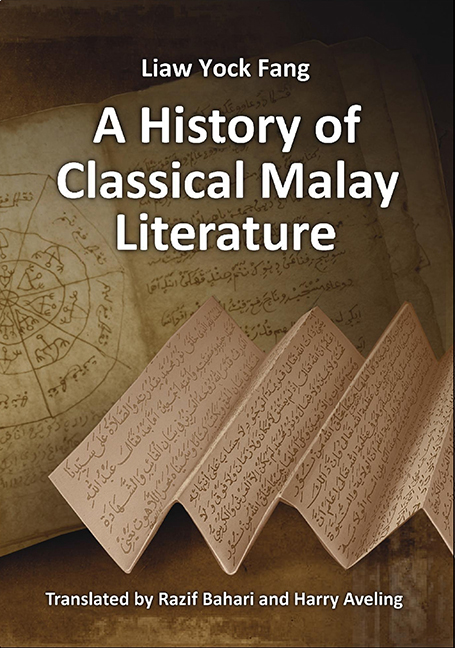Book contents
- Frontmatter
- Contents
- Preface
- List of Abbreviations
- Chapter I Folk Literature
- Chapter II The Indian Epics and The Wayang in Malay Literature
- Chapter III Javanese Panji Stories
- Chapter IV Literature Belonging to the Period of Transition from Hinduism to Islam
- Chapter V Literature of the Islamic Age
- Chapter VI Framed Narratives
- Chapter VII The Literature of Islamic Theology
- Chapter VIII Historical Literature
- Chapter IX Classical Malay Law Codes
- Chapter X Poetic Forms (Pantun and Syair)
- Bibliography
- Index
- Biographical Details
Chapter IV - Literature Belonging to the Period of Transition from Hinduism to Islam
Published online by Cambridge University Press: 21 October 2015
- Frontmatter
- Contents
- Preface
- List of Abbreviations
- Chapter I Folk Literature
- Chapter II The Indian Epics and The Wayang in Malay Literature
- Chapter III Javanese Panji Stories
- Chapter IV Literature Belonging to the Period of Transition from Hinduism to Islam
- Chapter V Literature of the Islamic Age
- Chapter VI Framed Narratives
- Chapter VII The Literature of Islamic Theology
- Chapter VIII Historical Literature
- Chapter IX Classical Malay Law Codes
- Chapter X Poetic Forms (Pantun and Syair)
- Bibliography
- Index
- Biographical Details
Summary
It is very difficult to determine which literary works belong to the period of transition from Hinduism to Islam in the Malay Archipelago. Firstly, traditional Malay literature is generally not dated and does not bear the name of its author. Secondly, it is written in the Arabic alphabet. This means that it was the advent of Islam in the Malay Archipelago and the ensuing use of the Jawi script that heralded the birth of traditional Malay literature in general. Thirdly, one can find evidence of Islamic influence even in the very oldest known Malay literary work, the Hikayat Sri Rama. For example, there is mention in one version of the Hikayat Sri Rama of the prophet Adam bestowing supernatural powers upon the meditating Rawana. In the folktale Hikayat Pelanduk Jenaka, the animal protagonist, the mousedeer, is often referred to as a servant of the prophet Sulaiman (Solomon) and of Syaikh Alim (a holy man) who lived in the forest. Fourthly, all literary works produced during the transition period were called hikayats, and the word hikayat is an Arabic word that means “story”. According to L. Brakel, the word hikayat was initially used to mean a “short story”, and was only used to denote a story of greater length after the publication of the Hikayat Muhamad Hanafiah (L. Brakel, 1979: 6). So which literary works belong to the transitional era?
Malay literature of the transitional age is a coming together of Hindu-inspired literature and Islamic influence. In other words, works which are patently Hindu but also contain Islamic elements, such as the Hikayat Sri Rama, are not considered literature of the transitional period. The characteristics of transitional age literature are as follows. The supreme deity in such works is initially referred to as “Dewata Mulia Raya” or “Batara Kala”, and then later replaced by “Raja Syah Alam” or “Allah Subhanahu wa Taala” (Allah, Glorious and Exalted).
- Type
- Chapter
- Information
- A History of Classical Malay Literature , pp. 142 - 183Publisher: ISEAS–Yusof Ishak InstitutePrint publication year: 2013

